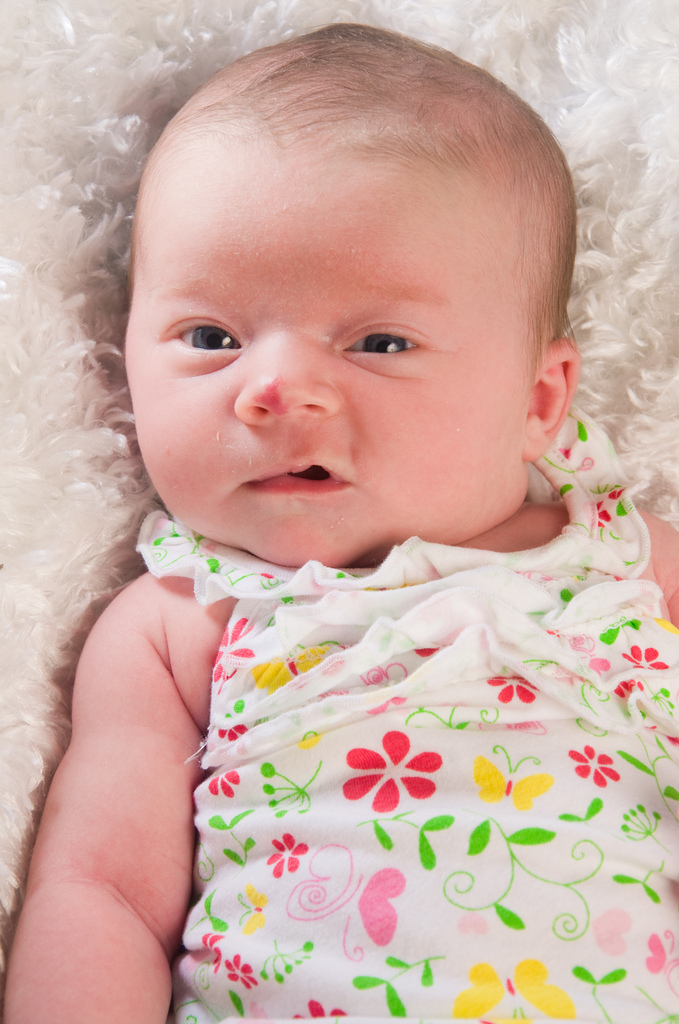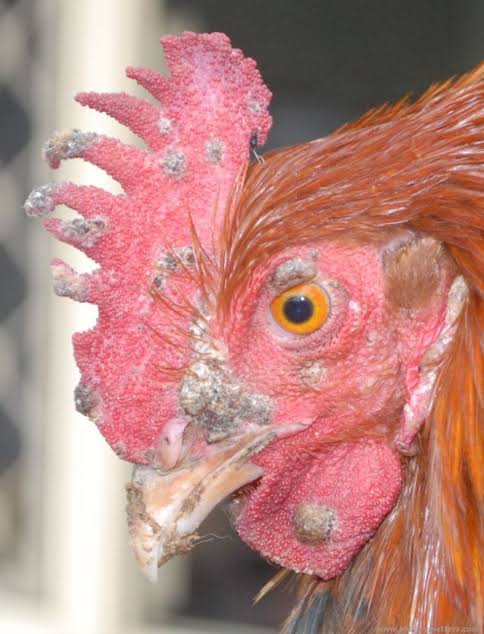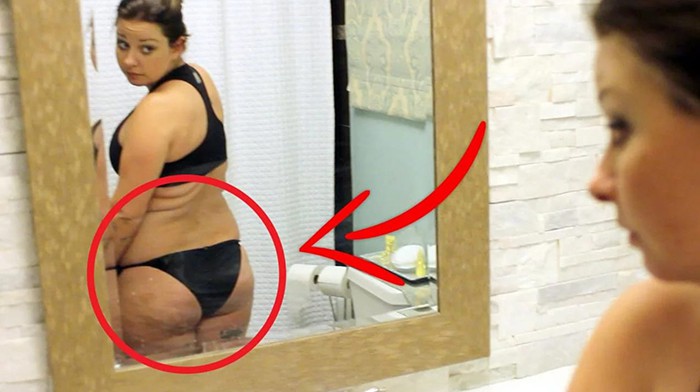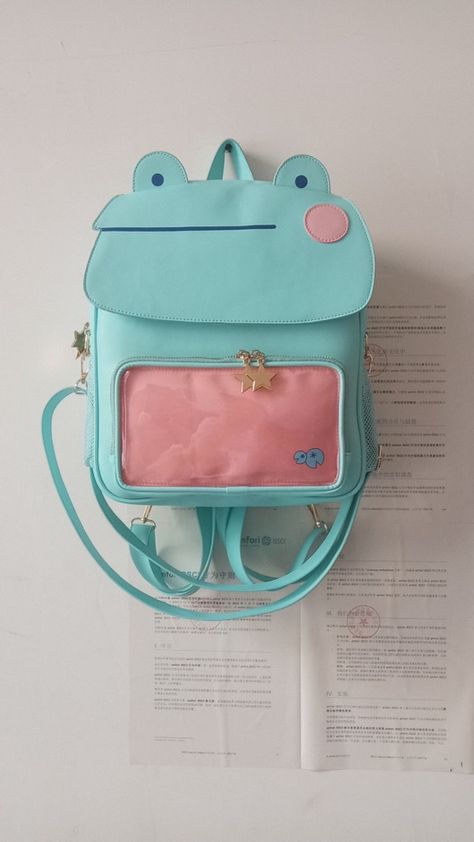Newborn eye irritation
Pink Eye (Conjunctivitis) in Newborns
Newborns with symptoms of conjunctivitis (pink eye) should see a doctor right away.
Neonatal conjunctivitis is a red eye in a newborn caused by infection, irritation, or a blocked tear duct. When caused by an infection, neonatal conjunctivitis can be very serious.
Symptoms and Causes of Conjunctivitis in Newborns
Newborns with conjunctivitis develop drainage from the eyes within a few days to several weeks after birth. Their eyelids become puffy, red, and tender. The cause of neonatal conjunctivitis is often difficult to determine because, in many instances, the symptoms don’t vary by cause.
Conjunctivitis in a newborn may be caused by a blocked tear duct, irritation produced by the topical antimicrobials given at birth, or infection with a virus or bacterium passed from the mother to her baby during childbirth. Even mothers without symptoms (asymptomatic) at the time of delivery can carry and pass bacteria or viruses to babies during birth.
The most common types of neonatal conjunctivitis include the following:
- Inclusion (chlamydial) conjunctivitis
Chlamydia trachomatis can cause inclusion conjunctivitis and genital infections (chlamydia). A woman with untreated chlamydia can pass the bacteria to her baby during childbirth. Symptoms of inclusion conjunctivitis include redness of the eye(s), swelling of the eyelids, and discharge of pus. Symptoms are likely to appear 5 to 12 days after birth. Symptoms can develop earlier if the amniotic sac is ruptured during delivery. Some newborns with chlamydial conjunctivitis can have the infection in other parts of their bodies. The bacteria can infect the lungs and nasopharynx (where the back of the nose connects to the mouth). - Gonococcal conjunctivitis
Neisseria gonorrhoeae can cause gonococcal conjunctivitis, as well as the sexually transmitted infection called gonorrhea. A woman with untreated gonorrhea can pass the bacteria to her baby during childbirth. Symptoms usually include red eyes, thick pus in the eyes, and swelling of the eyelids. This type of conjunctivitis usually begins in the first 2-5 days of life. It can also progress to serious infections of the bloodstream (bacteremia) and lining of the brain and spinal cord (meningitis) in newborns.
Symptoms usually include red eyes, thick pus in the eyes, and swelling of the eyelids. This type of conjunctivitis usually begins in the first 2-5 days of life. It can also progress to serious infections of the bloodstream (bacteremia) and lining of the brain and spinal cord (meningitis) in newborns. - Chemical conjunctivitis
When eye drops are given to newborns to help prevent a bacterial infection, the newborn’s eye(s) may become irritated. This may be diagnosed as chemical conjunctivitis. Symptoms of chemical conjunctivitis usually include mildly red eye(s) and some swelling of the eyelids. Symptoms are likely to last for only 24 to 36 hours. - Other neonatal conjunctivitis
Viruses and bacteria other than Chlamydia trachomatis and Neisseria gonorrhoeae can cause conjunctivitis. For example, bacteria that normally live in a woman’s vagina and are not sexually transmitted can cause conjunctivitis. Additionally, the viruses that cause genital and oral herpes can cause neonatal conjunctivitis and severe eye damage.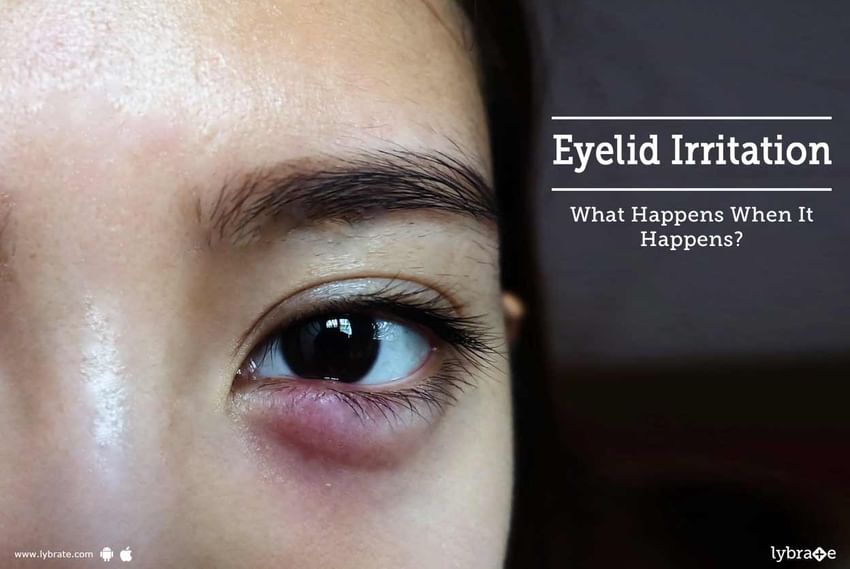 The mother may pass such viruses to her baby during childbirth. However, herpes conjunctivitis is less common than conjunctivitis caused by gonorrhea and chlamydia. Symptoms usually include red eye(s) and swollen eyelids with some pus.
The mother may pass such viruses to her baby during childbirth. However, herpes conjunctivitis is less common than conjunctivitis caused by gonorrhea and chlamydia. Symptoms usually include red eye(s) and swollen eyelids with some pus.
Prevention and Treatment of Conjunctivitis in Newborns
To prevent neonatal conjunctivitis, most states have laws requiring providers to put drops or ointment in a newborn’s eyes, typically within 2-3 hours of birth. In the past, hospitals used silver nitrate; now hospitals mostly use antibiotic eye drops, typically erythromycin. During pregnancy and prior to giving birth, women with genital herpes should consult with their physician about ways to minimize the chances of spread to their newborn baby.
Doctors may treat neonatal conjunctivitis caused by a bacterial infection with antibiotics. It will depend on the severity of the infection and the bacteria that caused it. Some antibiotics are applied as an eye drop or ointment in the eye (topical). Other antibiotics are given by mouth (orally), through a vein (intravenous), or as a shot (intramuscular). Doctors may treat a newborn’s conjunctivitis with a combination of topical, and either oral, intravenous, or intramuscular antibiotics. Rinsing the newborn’s infected eye with a saline solution will remove any debris that may develop in response to the infection.
Other antibiotics are given by mouth (orally), through a vein (intravenous), or as a shot (intramuscular). Doctors may treat a newborn’s conjunctivitis with a combination of topical, and either oral, intravenous, or intramuscular antibiotics. Rinsing the newborn’s infected eye with a saline solution will remove any debris that may develop in response to the infection.
If a blocked tear duct causes conjunctivitis, a gentle, warm massage between the eye and nasal area may help. If the blocked tear duct does not clear by 1 year of age, the newborn may require surgery.
Treatments for the common causes of neonatal conjunctivitis are as follows:
- Inclusion (chlamydial) conjunctivitis
Doctors usually use oral antibiotics to treat inclusion conjunctivitis. - Gonococcal conjunctivitis
Doctors give intravenous (IV) or intramuscular (IM) antibiotics to treat gonococcal conjunctivitis. If untreated, the newborn could develop corneal ulcerations (open sores in the cornea) and blindness.
- Chemical conjunctivitis
Since this type of conjunctivitis is caused by chemical irritation, treatment is usually not required. The newborn will usually get better in 24 to 36 hours. - Other bacterial and viral conjunctivitis
Doctors usually give antibiotic drops or ointments to treat conjunctivitis caused by other bacteria For both bacterial and viral conjunctivitis, a warm compress to the eye may relieve swelling and irritation. Be sure to wash hands before and after touching the infected eyes.
Neonatal conjunctivitis Information | Mount Sinai
Newborn conjunctivitis; Conjunctivitis of the newborn; Ophthalmia neonatorum; Eye infection - neonatal conjunctivitis
Conjunctivitis is swelling or infection of the membrane that lines the eyelids and covers the white part of the eye.
Conjunctivitis may occur in a newborn child.
Causes
Swollen or inflamed eyes are most commonly caused by:
- A blocked tear duct
- Eye drops with antibiotics, given right after birth
- Infection by bacteria or viruses
Bacteria that normally live in a woman's vagina may be passed to the baby during childbirth.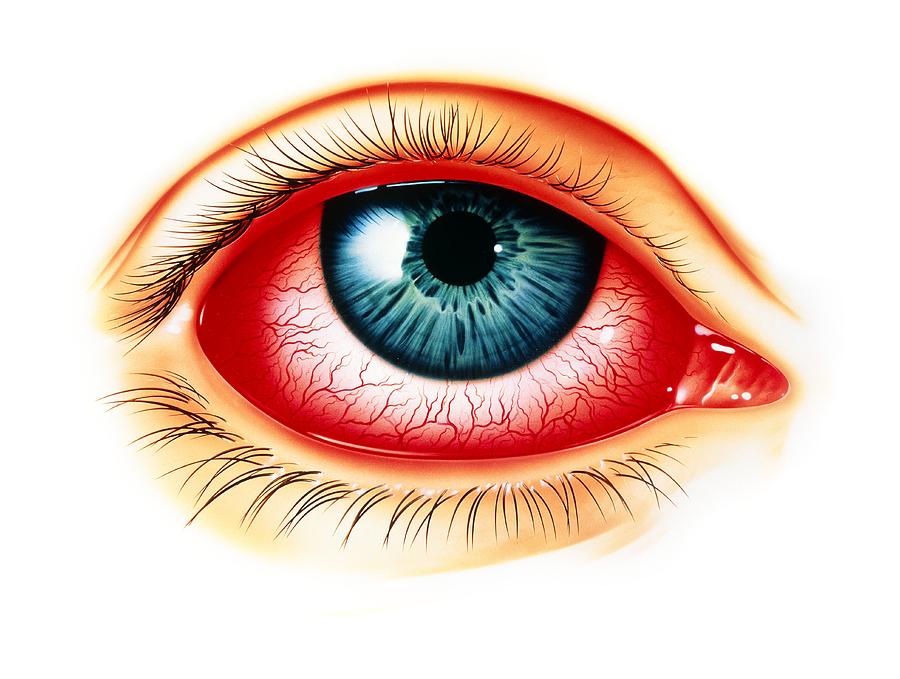 More serious eye damage may be caused by:
More serious eye damage may be caused by:
- Gonorrhea and chlamydia: These are infections spread from sexual contact.
- The viruses that cause genital and oral herpes: These may lead to severe eye damage. Herpes eye infections are less common than those caused by gonorrhea and chlamydia.
The mother may not have symptoms at the time of delivery. She still may carry bacteria or viruses that can cause this problem.
Symptoms
Infected newborn infants develop drainage from the eyes within 1 day to 2 weeks after birth.
The eyelids become puffy, red, and tender.
There may be watery, bloody, or thick pus-like drainage from the infant's eyes.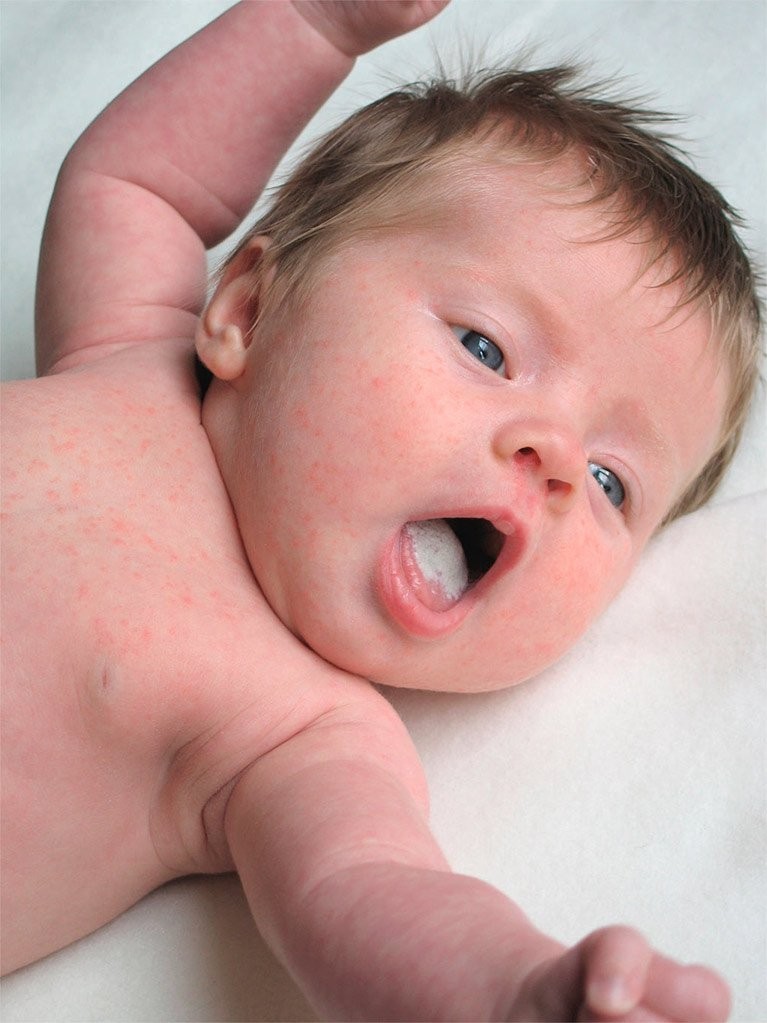
Exams and Tests
The health care provider will perform an eye exam on the baby. If the eye does not appear normal, the following tests may be done:
- Culture of the drainage from the eye to look for bacteria or viruses
- Slit-lamp exam to look for damage to the surface of the eyeball
Treatment
Eye swelling that is caused by the eye drops given at birth should go away on its own.
For a blocked tear duct, gentle warm massage between the eye and nasal area may help. This is most often tried before starting antibiotics. Surgery may be needed if a blocked tear duct has not cleared up by the time the baby is 1 year old.
Antibiotics are often needed for eye infections caused by bacteria. Eye drops and ointments may also be used. Salt water eye drops may be used to remove sticky yellow drainage.
Special antiviral eye drops or ointments are used for herpes infections of the eye.
Outlook (Prognosis)
Quick diagnosis and treatment often leads to good outcomes.
Possible Complications
Complications may include:
- Blindness
- Inflammation of the iris
- Scar or hole in the cornea -- the clear structure that is over the colored part of the eye (the iris)
When to Contact a Medical Professional
Talk to your provider if you have given birth (or expect to give birth) in a place where antibiotic or silver nitrate drops are not routinely placed in the infant's eyes. An example would be having an unsupervised birth at home. This is very important if you have or are at risk for any sexually transmitted disease.
An example would be having an unsupervised birth at home. This is very important if you have or are at risk for any sexually transmitted disease.
Prevention
Pregnant women should get treatment for diseases spread through sexual contact to prevent newborn conjunctivitis caused by these infections.
Putting eye drops into all infants' eyes in the delivery room right after birth can help prevent many infections. (Most states have laws requiring this treatment.)
When a mother has active herpes sores at the time of delivery, a Cesarean section (C-section) is recommended to prevent serious illness in the baby.
Olitsky SE, Marsh JD.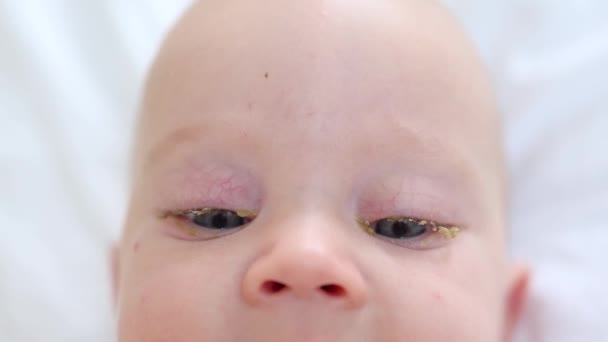 Disorders of the conjunctiva. In: Kliegman RM, St. Geme JW, Blum NJ, Shah SS, Tasker RC, Wilson KM, eds. Nelson Textbook of Pediatrics. 21st ed. Philadelphia, PA: Elsevier; 2020:chap 644.
Disorders of the conjunctiva. In: Kliegman RM, St. Geme JW, Blum NJ, Shah SS, Tasker RC, Wilson KM, eds. Nelson Textbook of Pediatrics. 21st ed. Philadelphia, PA: Elsevier; 2020:chap 644.
Orge FH. Examination and common problems in the neonatal eye. In: Martin RJ, Fanaroff AA, Walsh MC, eds. Fanaroff and Martin's Neonatal-Perinatal Medicine. 11th ed. Philadelphia, PA: Elsevier; 2020:chap 95.
Rubenstein JB, Spektor T. Conjunctivitis: infectious and noninfectious. In: Yanoff M, Duker JS, eds. Ophthalmology. 5th ed. Philadelphia, PA: Elsevier; 2019:chap 4.6.
Last reviewed on: 12/10/2021
Reviewed by: Neil K. Kaneshiro, MD, MHA, Clinical Professor of Pediatrics, University of Washington School of Medicine, Seattle, WA. Also reviewed by David Zieve, MD, MHA, Medical Director, Brenda Conaway, Editorial Director, and the A.D.A.M. Editorial team.
Redness of the eyes in children
Fantasy Ophthalmologists are doctors of evidence-based medicine, treat according to modern protocols, prescribe only effective treatment. We solve specific problems without redirecting to specialized centers. In our clinic, we have all the possibilities for the conservative treatment of eye diseases in children. Our specialists diagnose and treat all pathologies, including complex and rare ones.
We solve specific problems without redirecting to specialized centers. In our clinic, we have all the possibilities for the conservative treatment of eye diseases in children. Our specialists diagnose and treat all pathologies, including complex and rare ones.
Make an appointment via WhatsApp
Prices Doctors
The first children's clinic of evidence-based medicine in Moscow
No unnecessary examinations and drugs! We will prescribe only what has proven effective and will help your child.
Treatment according to world standards
We treat children with the same quality as in the best medical centers in the world.
The best team of doctors in Fantasy!
Pediatricians and subspecialists Fantasy - highly experienced doctors, members of professional societies. Doctors constantly improve their qualifications, undergo internships abroad.
Ultimate safety of treatment
We have made children's medicine safe! All our staff work according to the most stringent international standards JCI
We have fun, like visiting best friends
Game room, cheerful animator, gifts after the reception.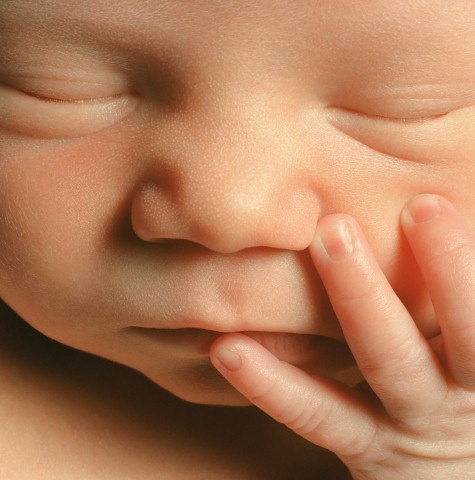 We try to make friends with the child and do everything to make the little patient feel comfortable with us.
We try to make friends with the child and do everything to make the little patient feel comfortable with us.
You can make an appointment by calling or by filling out the form on the website
Other services under Pediatric Ophthalmology
- Consultation of a pediatric ophthalmologist (oculist)
- Children's glasses frames
Frequent calls
- Lacrimation in children
- Astigmatism in children
- Conjunctivitis in children: diagnosis and treatment
- Farsightedness in children: diagnosis and treatment
- Myopia in children: diagnosis and treatment
- Strabismus in children: diagnosis and treatment
- Peeling eyelids in a child: causes and treatment
- Selection of lenses for children
- Children's vision test
- Choosing glasses for a child
- Measurement of intraocular pressure (IOP) with the Icare device for a child
- Removal of a chalazion in children
- Schirmer's test
- Lazy eye (amblyopia)
Rare eye diseases in children
- Aniridia in a child
- Retinitis pigmentosa in a child
- Best's dystrophy in a child
- Ophthalmology for children with albinism
- Achromatopsia in a child
- Chronic progressive external ophthalmoplegia in a child
- Ophthalmology for children with Down syndrome
Online payment
Documents online
Online services
Redness of the eyes in a child
The eyes are a very vulnerable and sensitive organ that must be protected from childhood. It is impossible to completely protect a child from injuries and ailments, so even if the baby rarely gets sick, some minor troubles and diseases can occur on his way.
It is impossible to completely protect a child from injuries and ailments, so even if the baby rarely gets sick, some minor troubles and diseases can occur on his way.
Redness of the eyes at first glance may seem like a minor and not serious ailment in a child. Sometimes this phenomenon happens to little fans of computer games, television and even reading. Eye strain and long concentration on some activity can lead to their redness. By reducing the hours of watching TV and sitting at the computer, you will help your child get rid of unpleasant sensations in the eyes. But, unfortunately, this problem can not always be dealt with so easily. In more serious cases, consultation and even emergency help from a pediatric ophthalmologist may be required.
If your child is concerned about discomfort in the eyes, or you yourself have noticed redness of the whites of the eyes or eyelids, accompanied by other alarming symptoms, it is not worth postponing a visit to the doctor.
There can be a great variety of reasons for redness of the eyes in children:
- "Dry Eye Syndrome" .
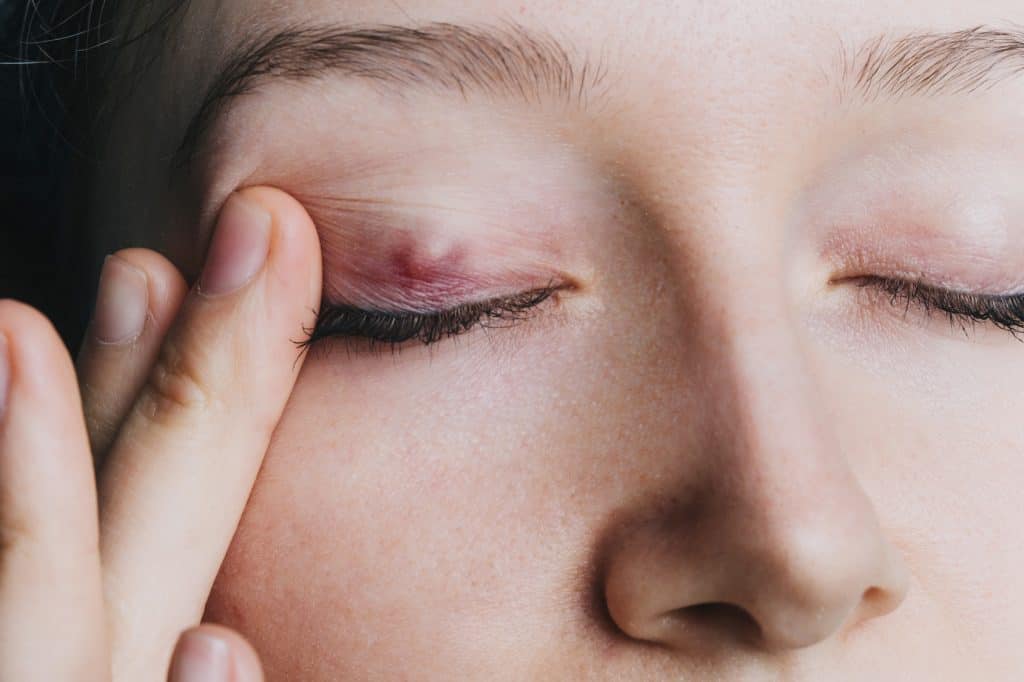 This redness often occurs in school-age children and is associated with heavy workloads at school. Children who stay in front of a computer or TV for a long time, read or draw too much are also prone to a similar syndrome. As a rule, in addition to redness of the eyes, the child feels dryness and discomfort in the eyes due to insufficient release of tear fluid.
This redness often occurs in school-age children and is associated with heavy workloads at school. Children who stay in front of a computer or TV for a long time, read or draw too much are also prone to a similar syndrome. As a rule, in addition to redness of the eyes, the child feels dryness and discomfort in the eyes due to insufficient release of tear fluid. - Broken vessel in the eye . Some children have insufficiently elastic vessel walls, and with increased physical exertion, injuries, etc. the vessel does not withstand and is damaged, which is manifested by the redness of the whites of the eyes. Sometimes a vessel can burst due to very loud crying, viral diseases, careless games, prolonged eye strain, etc.
- Allergy . In some children, allergies can be expressed in redness of the eyes, profuse lacrimation, redness and swelling of the eyelids. If the baby has all these symptoms, then most likely it is an allergic reaction, and you need to understand what became the source of irritation and eliminate it.

- If the redness of the eyes is accompanied by fever, cough and nasal discharge, then it may well be that the child has caught a cold or caught some kind of virus.
- Young children are very susceptible to infections such as conjunctivitis , which is manifested by redness of the eye, discharge of pus and sticking of the eyelids. This is a contagious disease, and if it affects one eye, it can very quickly move to the second. Most often, children get conjunctivitis in the sandbox, when sand during play or dirt gets into the eyes and causes a bacterial infection. With similar symptoms in children, uveitis , blepharitis and even glaucoma . An accurate diagnosis can only be made by a pediatric specialist.
- Burning, sharp pain and discomfort against the background of redness of the eyes may indicate a foreign body in the eye, eye injury or inflammation of the iris. In this case, a consultation with a pediatric oculist is required.

- If a child's metabolism is disturbed, this can lead to vascular fragility and, accordingly, redness of the eyes.
- Lacrimal duct obstruction often affects newborns. Red eyes, purulent discharge and swelling of the eyelids in infants speak precisely of the blockage of the canal, which requires cleaning, special eye massages and drug treatment.
If you observe constant redness of the eyes in your child, then this may indicate such diseases as diabetes mellitus , myopia or hyperopia, anemia, gastrointestinal diseases.
Treatment
Treatment for a child's eye will depend on the cause of the redness. With allergies, antihistamines and the elimination of the provoking factor will help. In case of colds, the disease itself is primarily treated, and children's drops are prescribed for the eyes. Bacterial infections require a doctor to prescribe special drops, ointments and antibiotics and maintain eye hygiene. Independent actions in this case can lead to serious complications and consequences.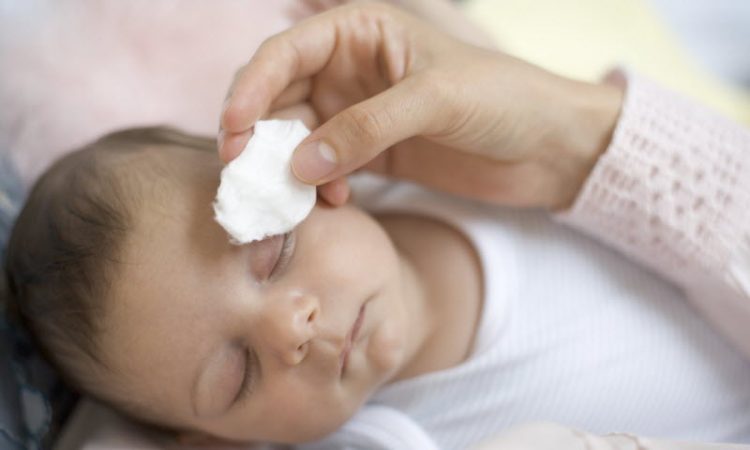 In any case, whatever the cause of your child's red eyes, the safest thing to do is to see a doctor and follow his instructions.
In any case, whatever the cause of your child's red eyes, the safest thing to do is to see a doctor and follow his instructions.
An urgent appointment with a doctor is necessary in the following cases:
- discharge of pus from the eyes;
- redness of the eyes with fever, pressure and severe headache;
- photophobia, burning in the eye, a sharp decrease in vision;
- sticking of the eyelids and inability to open the eye;
- any injury to the eye or damage to the cornea.
In St. Petersburg, you can get an appointment with a children's ophthalmologist in the shortest possible time by signing up for a consultation at the Medicenter. The department of pediatrics of the Medicenter clinic network employs some of the best children's specialists in the city, ready to help both newborns and infants, as well as children of primary school age and adolescents.
Our pediatric ophthalmologists will help you find the cause of redness of the eyes, make an accurate diagnosis and prescribe the right treatment.